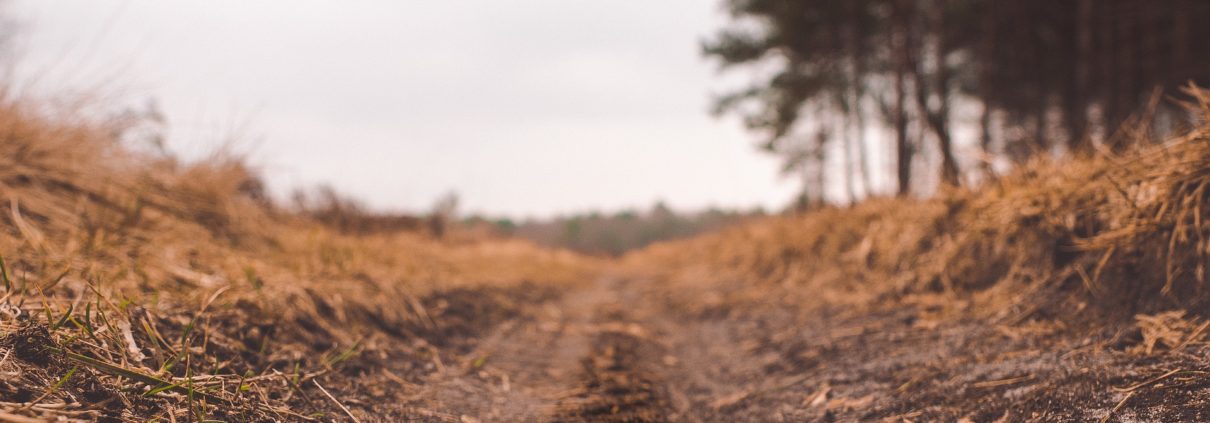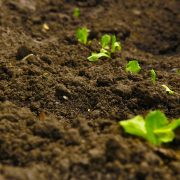In What Ways Do Soil Types Affect Land Use?
Soil deserves a lot more attention than it gets. Few people talk about how much soil types affect land use The right kind of soil can help a land owner grow great crops or build houses that last a long time. The wrong kind of soil can result in stunted crops or houses being swept away during floods. While soil types might not seem important at first glance, they just might be the factor that makes or breaks your land property.
Because of the unique chemical make-ups of each soil type, the practices used on a plot of land must be matched to the land’s soil type. Each soil type is unique and has its own benefits and drawbacks. Some are best suited for crops, while others are better for buildings houses and barns on.
If you are new to soil types, here’s a quick Soil 101 on the different soil types you could find on your land real estate:
- Clay. Clay soil has excellent water storage. Thanks to this, it holds onto plant nutrients and is great for roses, leafy vegetables, peas, and tomatoes.
- Chalky. This low moisture soil is typically found over limestone beds and chalk deposits. This soil type is not ideal for planting crops, as it can result in stunted or yellow plants. However, finding this soil type on your land doesn’t mean you can’t use it at all. Adding acid-rich materials (such as peat or manure) can help balance out the more destructive elements of this soil type.
- Loamy. Loamy soil is a combination of sand, silt, and clay. It’s a favorite among farmers, thanks to its high calcium and PH levels. You can grow just about anything in this soil type.
- Peaty. Dark brown or black in color, this soil type has a high water content that is great for crops that require a lot of moisture. However, it does dry up quickly in the summer, so Southern farmers might want to be careful with this soil type.
- Saline soil. You’ll probably find this soil type if you are living in an extremely dry region. Its high salt content makes it a poor choice for growing most crops.
- Sandy. This free-draining soil dries out faster than any other soil type on this list. Any nutrients that crops may need can be washed through the soil during wet weather.
- Silty. Silty land has small particles and is smooth to the touch. It has great moisture retention, but drains poorly. Similar to peaty soil, this soil type can be great for crops that need a lot of water, but crops that don’t will likely drown.
With all these soil types, how on earth is anyone supposed to know what soil type is right for their land?
There are three options for finding out what soil type your land has. One is to get a soil map. You can go to the USDA’s Natural Resources and Conservation Services (NRCS) page. They have soil maps and data for more than ninety-five percent of the nation’s counties. All you have to do is click on the link and zoom into your zip code (like you would in Google Maps) or type in your address. Click on the ‘Soil Survey Area’ tab on the left-hand side and you will be given a record of what types of land are in your area.
You can also ask local soil experts who are familiar with the soil types in your area. Soil experts, also referred to as extension agents, can help you figure out what type of soil you have on your land and what sort of improvements can be done to your soil. This personalized help is great for land owners who have multiple soil types on their land property.
Soil testing gives you an exact breakdown of what is in your soil. In the fall 2015 edition of Terra Firma, Kirk Goble, ALC, explains the benefits of soil testing on page twenty nine.
“The soil test lab report provides valuable information on the makeup of the soil, its pH (acidity or alkalinity), and cation exchange capacity (CEC),” says Goble. “CEC is a determination of the ability of the soil components (primarily clay and humus) to allow for the absorption and transport of soil nutrients from the soil to the plant roots. It is essentially a measure of the soil’s ability to hold nutrients and feed the plants.”
After testing, you’ll be given advice on what crops are best suited for your soil type and recommendations on how to improve your land. “Fertilizer recommendations are based on the results of a proper soil test,” says Goble.
Soil types are incredibly important to land real estate and are far too often overlooked. Soil types affect land use more than most people think. With all these tools at your disposal, you’ll be able to figure out the soil types on your land and use them to your advantage.
 About the author: Laura Barker is Marketing Assistant for the REALTORS® Land Institute. She graduated from Clark University in May 2017 and had been with RLI since October 2017.
About the author: Laura Barker is Marketing Assistant for the REALTORS® Land Institute. She graduated from Clark University in May 2017 and had been with RLI since October 2017.





Trackbacks & Pingbacks
[…] you buy farmland for sale, you should make sure that the soil has the right nutrients and acidity to grow your preferred […]
[…] you buy farmland for sale, you should make sure that the soil has the right nutrients and acidity to grow your preferred […]
[…] you buy farmland for sale, you should make sure that the soil has the right nutrients and acidity to grow your preferred […]
[…] what the soil type of your land is. This information is obtained by performing a soil or geotechnical […]
[…] qualified real estate agent with land experience can help you find a parcel of land with good soil health, and will also be able to help you learn about zoning laws, which can regulate what the land can be […]
[…] you buy farmland for sale, you should make sure that the soil has the right nutrients and acidity to grow your preferred […]
[…] Soils – In certain areas of the country, soils and soil productivity drive price. Farming (tillable acres) land is evaluated on the productivity […]
Comments are closed.